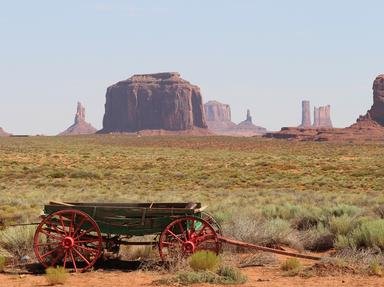Quiz Answer Key and Fun Facts
1. Who is credited for the creation of 'Spaghetti Western' movies?
2. Under what names did the man credited for the creation of 'Spaghetti Western' movies and Ennio Morricone (the movie score composer) appear in the credits and advertisements of 'A Fistful of Dollars'?
3. On what famous Japanese movie was 'A Fistful of Dollars' based?
4. In the movie 'For a Few Dollars More', to whom did the musical pocket watch in Indio's possession originally belong?
5. The musical score by Ennio Morricone for the movie 'The Good, The Bad and The Ugly' is probably THE most recognized Western theme tune worldwide. Particularly noticeable is the 'scream' that can be heard near the beginning and throughout. What was the scream intended to represent?
6. Who portrayed Tuco in 'The Good, The Bad and The Ugly'?
7. What was the amount of money that the Man With No Name was attempting to cash in on at the outset of 'A Fistful of Dollars' and when they discover the existence of the treasure in 'The Good, The Bad and The Ugly'?
8. Where is the bank that Indio plans to rob, in the movie 'For a Few Dollars More'?
9. Who did the man credited for the creation of 'Spaghetti Western' movies originally wish to cast as the Man With No Name in his Clint Eastwood westerns?
10. Ultra-Toughie. To what did the man credited for the creation of 'Spaghetti Western' movies compare Clint Eastwood to during the shooting of the three 'Man With No Name' movies?
11. Who was the voice of the unseen bounty hunter at the opening sequence of 'For A Few Dollars More', heard lighting a cigar, cocking his rifle and casually whistling?
12. What are the names of the two feuding families in 'A Fistful of Dollars'?
13. Who does Tuco slap at the seminary in 'The Good, The Bad and The Ugly'?
14. What is Tuco's full name?
15. What is peculiar about the Man With No Name's appearance at the beginning of 'The Good, The Bad and The Ugly?
Source: Author
TemplarLLM
This quiz was reviewed by FunTrivia editor
rj211 before going online.
Any errors found in FunTrivia content are routinely corrected through our feedback system.

